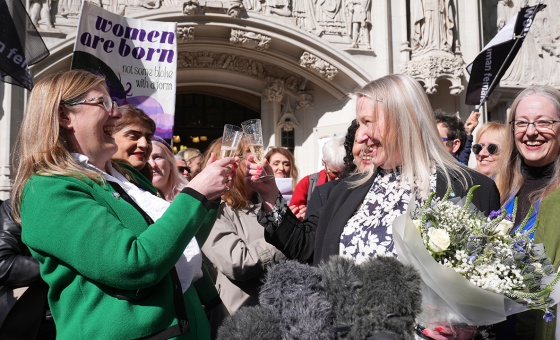This is the last article you can read this month
You can read more article this month
You can read more articles this month
Sorry your limit is up for this month
Reset on:
Please help support the Morning Star by subscribing here
I love toads. I shared a garden once with one — he lived for years in an upturned flowerpot in a damp and shady corner and helped in my constant battle against slugs and other garden pests.
I always called him Mr Toad. He was much better pest control than a whole shed full of chemicals.
George Orwell shared my love of the common toad (Bufo bufo). In the year I was born — 1946 — Orwell wrote an essay for the socialist paper Tribune in praise of the humble creature.
Orwell loved nature and occasionally wrote nature notes instead of the hard left-wing politics his Tribune readers expected. Some wrote to complain and suggest he got back to writing about serious politics and world affairs.
John Betjeman on the other hand wrote to say: “I have always thought you were one of the best living writers of prose,” and telling Orwell he had “enjoyed and echoed every sentiment” of his thoughts on the common toad.
Orwell pointed out that the pleasures of simple natural things are available to everybody and cost nothing and he argued that retaining a childhood love of nature makes a peaceful and decent future more likely.
He finished his toad essay thus: “How many times have I stood watching the toads mating, or a pair of hares having a boxing match in the young corn, and thought of all the important persons who would stop me enjoying this if they could.
But luckily they can’t…
“The atom bombs are piling up in the factories, the police are prowling through the cities, the lies are streaming from the loudspeakers, but the earth is still going round the sun, and neither the dictators nor the bureaucrats, deeply as they disapprove of the process, are able to prevent it.”
Sadly, today my and Orwell’s toad is making headlines for all the wrong reasons. Britain’s toad population has plummeted by nearly 70 per cent over the past 30 years and is now in such peril that the once common species is close to qualifying as endangered.
A combination of new intensive profit-driven farming techniques, which have entailed the loss of ponds and the death of prey from pesticides, as well as increasing urbanisation has reduced toad populations by thousands.
Tidy, hard-surfaced domestic gardens are another peril as is the massive increase in road traffic. This is despite widespread schemes to help toads safely migrate to their breeding ponds by carrying them across busy roads. You have probably seen the many quaint roadsigns indicating toad crossings.
Climate change is another cause of the population decline because of the disruption this causes to hibernation cycles by milder winters.
South-east England has suffered the worst decline in toad numbers recently but populations are falling all over the country.
Toads are extremely adaptable and can live in many places ranging from farmland and woodland to suburban gardens, where they play an important role as pest controllers, eating slugs, snails and insects and are food themselves for many of our most likeable mammals such as otters.
Toads and frogs are easily distinguished by the fact that frogs have smooth, moist skin while toads have drier, “warty” skin. Frogs have longer legs so that they can jump whereas toads have shorter legs which they use to crawl.
You are more likely to see them on mild nights as they hide during the day. In the winter, they hibernate in hollows or at the bases of hedgerows.
They like ponds with fish. This is because their tadpoles are poisonous to fish which gives them a greater chance of out-competing frog tadpoles.
They continue to be able to secrete toxins as adults and therefore have few predators. However, they will be taken by herons, members of the crow family and grass snakes.
You may notice the noxious secretions they have if you pick them up.
They usually hibernate between October and March and then breed from March onwards when tiny toadlets emerge from ponds during August.
There is no doubt that although popular and friendly toads are ugly, squat and warty. Their remarkable large bright eyes led to the belief that inside a toad’s head was a valuable jewel which led to the destruction of many toads by ignorant people until relatively recently.
They occupy a fond place in the British imagination. Mr Toad in Kenneth Grahame’s 1908 novel The Wind in the Willows, is a selfish and reckless character but is nevertheless well loved.
Perhaps that is why every year thousands of volunteers take part in Toads on Roads patrols to help carry nearly a million of the amphibians in safety to their breeding waters.
Britain has another even rarer and more threatened species of toad. This is the natterjack toad — Bufo calamita.
It can be distinguished from common toads by a yellow line down the middle of the back and shorter legs that gives them a distinctive walking gait.
Natterjacks have a very loud and distinctive mating call so their name literally means the chattering toad — the jack (or toad) that natters. In the sand dunes around Liverpool they call them the Formby nightingale.
In England, the natterjack lives in very few locations mostly among coastal sand dunes along the Mersey estuary. But never, sadly, anywhere near Wigan Pier.









